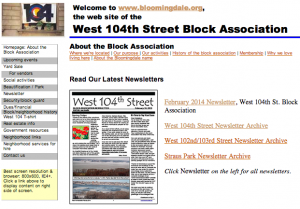I answer questions about UX, Information Architecture and other topics on Quora. A selection of these answers will be reposted on Medium with occasional, minor editing for clarity.
A lot of what makes a good UX designer/researcher/architect are the soft skills that you only really develop having been in the working world for a while, so a 38 year old is at an advantage in that respect. Ability to listen, communicate, sketch out ideas (you don’t even need to draw well), and understand the goal of a user and how it aligns with the needs of a product or business. Ability to prioritize user needs against the goals of the business and the technical feasibility of developing the product. You don’t need to be able to code, but it helps to understand some core capabilities of the development team to get a sense of whether what you are asking them to do is feasible within the project’s budget and time constraints.
As for technical skills, products and platforms change, but it’s good to have a strong foundational understanding of UX and general design principles. UX Matters and Boxes and Arrows are good online resources. Books like Morville/Rosenfeld’s Information Architecture for the Web and Beyond, Jesse James Garrett’s Elements of User Experience, Steve Krug’s Don’t Make Me Think and Donald Norman’s Design of Everyday Things are classics. There are many more titles at Rosenfeld Media and O’Reilly Media on more specific topics like mental models, story mapping, enterprise UX, design critique, etc. and many other publishers in that space. There are dozens of meetups and organizations like User Experience Professionals Association, IA Institute and Interaction Design Association that have local and international conferences and dozens of local Meetups.
Look at job ads for specific tools they are using in positions that interest you. It used to be they were always requiring Visio and Omnigraffle skiils, sometimes Axure, but now Sketch, Balsamiq and InVision are very popular, along with good old Adobe Creative Suite. But there is always going to be another tool, and once you know a few, the learning curve gets less and less steep. There are probably a half dozen new, “essential” tools that came out just while I am typing this. Richard Saul Wurman noted in his plenary at the 2010 IA Summit in Phoenix that the UX designer’s penchant for focusing too much on tools is problematic. Tools change but Understanding the User’s experience is more important.
Public speaking ability is often described in job posts as a plus, and I know tons of self-described introverts who do this and well. A lot of good speaking comes from good listening skills. Persuasion skills are also good for getting buy in around an idea.
You should have a portfolio that highlights some of the above, including design samples/mockups/UI graphics if you’ve done some, whether for work or pro bono/fun side projects. It doesn’t need to be a lot. (I know I have way too many on mine). Include descriptions of projects that highlight evidence of your soft skills, because that will set you and your experience apart.

